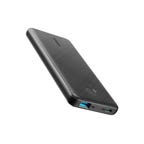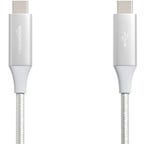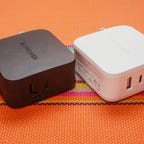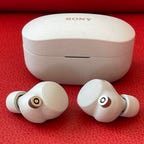I've Traveled All Over the World. These Are 7 Things I Always Pack
These are the best travel gadgets for your next adventure.
Our Picks
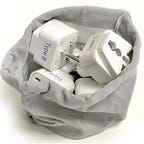
Winter is just about over, so it’s time to gather the best travel gadgets for your upcoming spring break adventures. There are some great travel gadgets that can make your trip easier, no matter where you're headed. For six years I traveled all over the world, including across Europe, inside ancient castles in Japan — and more recently, a 10,000-mile road trip around the US. As a digital nomad, I tend to travel light with a backpack or a tiny car. There are some key devices I recommend packing, so I put together this list of some of the best travel gadgets that I never leave home without.
I'm not a fan of specialized, and often unnecessarily expensive, single-use gadgets. Travel is expensive enough without piling on frivolous, fancy fluff. And because I travel light, I don't want anything bulky or heavy: Simplicity is the name of the game here, but there are a few things that are valuable enough, in terms of their use, that they're worth having regardless of size or cost.
So no matter where you're heading, or for how long, these are a few things you should definitely bring with you.
Read more: Best E-Reader for 2024
No matter how good your phone, after a long day taking pictures and using Google Maps to navigate some amazing location, its battery is going to be toast. USB battery packs will top up your phone's battery, often several times. The smaller ones easily fit in a pocket, the largest ones in a purse or backpack. They'll recharge anything that has a USB port, so your wireless headphones and probably your camera, too.
I tend to upgrade mine every two years or so. That seems to be the stretch of time over which the size drops for a given capacity, or the capacity goes up for a given size. Models with built-in cables are super convenient, though the cable is always a weak point -- it'll likely get strained after months or years of frequent use. That said, if you're just using it for travel, the added convenience is probably a bigger consideration than its overall longevity.
Anker is one of the biggest names in USB battery packs. I've had several of varying sizes over the years, handing down my old ones for newer, higher-capacity models. I have an older Anker model right now, but this version can recharge your phone to 100% a couple of times, and even give some laptops or tablets a few extra hours of use. It can fast-charge most phones that are capable of fast-charging too.
For more options, check out our guides to the best portable chargers and power banks for Android and best portable chargers and power banks for iPhone.
AmazonBasics braided cables
Extra USB cables
In all my years of travel, the things that I've had to replace more than anything else, by far, are USB cables. No cable is meant to endure constant plugging and unplugging, coiling and uncoiling, and getting repeatedly, albeit accidentally, stepped on.
Perhaps most frustratingly, if one of your cables does go out while you're on vacation, the insanely overpriced ones you're likely to find in touristy areas probably won't let your phone charge as fast.
I tend to bring a mix of cables with me, most are short for convenience, but at least one is a longer, six-foot (2m) cable that will hopefully reach between my bed and wherever the terribly-placed outlet is in the hotel or hostel. Braided cables have survived a little longer for me, so I usually go for those. The linked cable is USB-C to USB-C, fairly common among phones and chargers these days, but you might need USB-C to -A, or Lightning, also linked below.
Don't overpay, however. They're all going to break eventually. No need to spend a fortune.
RAVPower 61-watt Dual-Port Charger
Fast multiport charger
With the vast majority of hotel rooms woefully short of outlets, it's better to have an adapter that can charge multiple devices -- and quickly. Not all chargers perform the same. Make sure you check out the amp rating, and aim for one that does at least 2.4 amps on each output. If your phone or USB battery pack is capable of fast-charging, make sure you get a charger with that capability on at least one output as well. In CNET's testing, the RAVPower Dual-Port charged a MacBook Air from dead to 65% in an hour. If you have more USB devices you want to charge at once, there are similar models with additional USB outputs. A foldable plug, like this RAV, is an added bonus.
For more options, check out our guide to the best USB-C PD chargers.
Ceptics International Worldwide Travel Plug Adapter 3-Piece Set
International plug adapters
The vast majority of the electronics you own do not need voltage converters. Nearly all adapters automatically convert the incoming voltage (i.e. from the wall) to whatever voltage your electronics need to run or charge. Take a look at the fine print on the adapter. It will likely say "Input: 100-240V, 50-60Hz." That means you can plug it in just about anywhere in the world… as long as you have an adapter to let it fit the local outlets. If it doesn't say that, you likely can't use it overseas. Hair dryers and straighteners are two common items that might not work in a different country (though nearly every hotel and hostel will at least have a hair dryer).
I prefer simple and cheap plug adapters. I know many people adore the all-in-one travel charger cubes that give you a block with slide-out options for outlets all over the world, but I'm not a fan. They're bulky, often surprisingly fragile, and worst of all, often only give you one outlet for their huge size. Plug adapters are small enough to stay on the end of your charger, taking up almost no extra space. They have no moving parts, so they're nearly impossible to break.
If your trip is going to cross areas with different plug types, grab another and throw it in your bag. If you have more than one thing to plug in, again, several of these are far easier to have with you than multiple all-in-one bricks. You could, for example, have three plug adapters for three different chargers and never have to swap outlets like you would with a travel charger cube. Not only is this more convenient, but likely cheaper too.
I've traveled with Ceptics plug adapters for years. It sells a five-piece set that includes a small travel bag, which I use to store them when I'm home. I only bring with me the plug or plugs I'll need for that specific trip, as usually one plug type will suffice for most of a continent. Certainly double-check before you leave for a multicountry adventure, however. And for the completist, there's a $28 set that's
Sony WF-1000XM4
Noise-canceling headphones
I was on the fence whether to call these "vital" or just "optional." If you're tight on funds, definitely the latter. That said, I bring a pair of noise-canceling headphones with me on every trip. From airplanes to buses and trains, they reduce the hum and roar that can make travel so exhausting.
There are two important things to know about noise-canceling headphones, however. The first is that they don't "silence" the world around you. They reduce some sounds, namely low-frequency droning sounds like jet engines and tires on pavement. They won't block crying babies or chatty neighbors. The other is that not all noise-canceling headphones work as advertised. The specs are largely meaningless. Two headphones that both claim to reduce sound by "15 decibels" can perform radically differently.
I know some people like the better isolation of over-ear headphones for travel, but their bulk is a deal-breaker for me. CNET's Executive Editor David Carnoy loves the true wireless Sony WF-1000XM4, which he says have "top-notch noise canceling and sound quality." In the case of the former, it's equal to or perhaps better than their more famous counterparts from Bose. The Sonys, though, sound better.
For even more options, check out our guide to the best noise-canceling headphones of 2024.
Microsoft Surface Go 3
Travel-size laptop
Unless you're traveling all the time, or for longer than a typical American vacation, you probably don't need a specific "travel laptop."
That said, if you are looking for a longer time away, or know you're going to be working a bit when you go, it's worth considering something small and light. A full-size laptop, with its associated bulk and myriad cables, is just the sort of hassle I aim to avoid. There's no one "thing" that can make travel easy, but there are a lot of little things that add up to make it hard. A heavy, annoying laptop is part of the latter.
Yes, many travelers love the iPad or iPad Pro, and for good reason -- but their software situation still requires jumping through too many hoops to get stuff done. After years of inexpensive (and excruciatingly underpowered) laptops, I finally upgraded to a Microsoft Surface Go. It's roughly the size of a tablet, but runs a full version of Windows. It's still fairly low-powered compared to most laptops, but if you spec it out with 8GB of RAM it can run just fine with a bunch of Chrome tabs open. I do most of my photo editing for my various CNET travel tours with it, and even did a little video editing with Premiere. I wouldn't recommend one of these if you do much of the latter, however.
While not for everyone, the vast majority of people have far more laptop than they really need, and the Go's size and battery life make it a far better travel companion than something larger. The latest version, the Go 3, has faster processors than the original Go I've used (and loved) for years. Unless you're editing lots of videos, or want to game on the road, one of these will work great.
If you think you'll only work a little, maybe just answer a few emails, consider getting a keyboard for your tablet.
Amazon Kindle Paperwhite
E-reader
At first glance this seems like a frivolous addition, since you can read books on your phone, tablet or in that ancient, carbon-based analog form. Tablets and phones, however, are hard to read in direct sunlight. At night, even in night mode, the light from a screen can affect sleep. Paper books are great and I prefer them, but for any extended trip you're going to have to carry an awful lot of paperbacks.
A dedicated e-reader is a great compromise, thanks to their e-Ink screens. They work great in direct sunlight and require very little power (they only need to be charged every week or two). At night you can either read using a bedside lamp, or if you don't want to disturb your partner, most models have built-in illumination. The latest Kindle Paperwhite models check all the boxes, and they're waterproof, which is a good idea for poolside reading.
For more options, check out our guide to the best e-book readers.
More for travelers
- How to Avoid Getting Sick When You Fly" target="_blank
- The Best Travel Gifts for 2024" target="_blank
- The Best Travel Tips From Travel Pros" target="_blank
- Best Laptop Backpacks for Travel in 2024" target="_blank
- The Best True Wireless Earbuds of 2024" target="_blank
- Best Tablets for 2024" target="_blank
- Best Kids Tablets for 2023" target="_blank
- The Best Smart Locks of 2024" target="_blank


